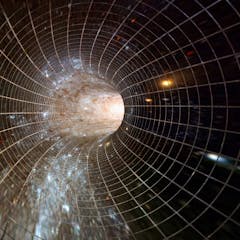
Articles on Science
Displaying 441 - 460 of 592 articles

As much as one-third of animal species in the tropics could be eradicated if their habitats continue to be converted for monoculture farming. We can all do something to make a difference.

It’s very easy to assume climate change causes droughts, but they are complex extreme events that result from a combination of drivers.

Scientists are beginning to link animal facial expressions to emotions, making it possible for us to understand how they feel.

Systematic reviews are rarely applied to basic research. A new study shows how they could separate good data from bad, saving millions in research dollars and speeding life-saving treatments.

Climate change, insects and urban farm towers are a few things that will change how and what we eat in the future.

Working with an embedded artist for a year helped one physicist realise that art and science share a lot of common ground

By 2167, genetically designed, digitally enhanced humans with Internet-connected brains will live with intelligent machines in a transformed environment and maybe even among the stars.

We will one day grow food in conditions as extreme as Mars. Developing the controlled environments required will help not only space explorers but also support our own survival here on Earth.

By 2167, DNA barcoding scans will lead to weather-style “biodiversity forecasts,” enabling us to more easily protect and care for the environment.

South Africans will not see the value that science and technology adds to their daily lives until there is more interest in areas of science.

A seed contains nearly everything a tree needs to get growing. Just add a dash of water, a bit of warmth and the right location, and you’ll be seeing green in no time.

Biologists have a centuries-old tradition of publishing on rare and endangered species. But poachers are using open-access information to target valuable and fragile new species.

Researchers find striking results from a large study of secondary school students.

Simon John James and Richard Bower chat about differing conceptions of what it is to travel through time.

Phrases like “knowledge production” conceal the fact that knowledge answers to something beyond itself and beyond us. To produce knowledge is to find out about something.

Insisting that science has a monopoly on the truth invalidates dissent and undermines what should be an open dialogue between science and society.

Policies must seek to improve the manner in which the language of instruction is taught to learners who don’t speak that language at home.

Science today is increasingly data-driven, but our education system has not caught up.

Fingers on buzzers.

We can overcome the tyranny of inaccessible science hardware by building a movement for equity in science.
